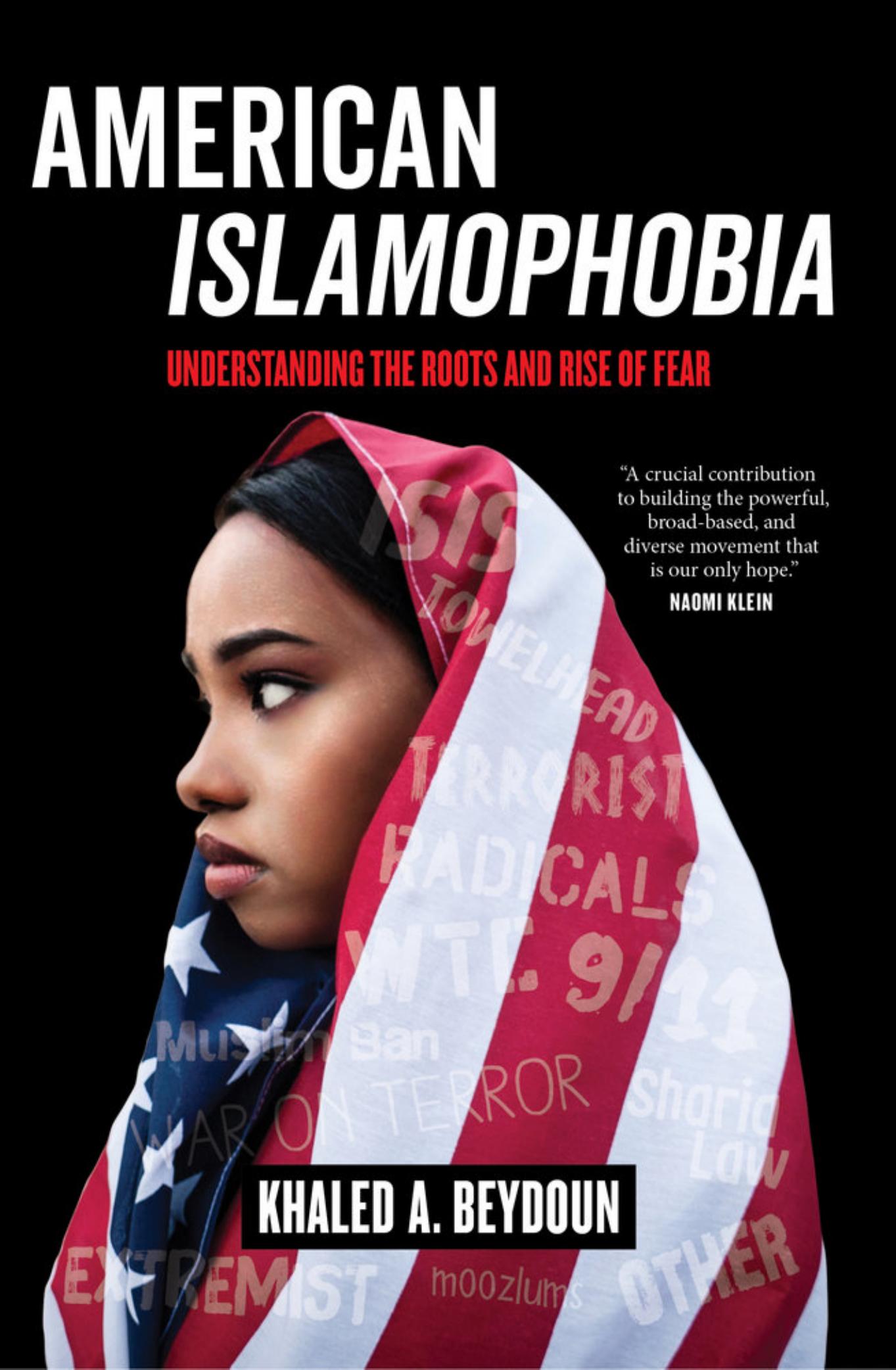American Islamophobia: Understanding the Roots and Rise of Fear by Khaled A. Beydoun

Author:Khaled A. Beydoun [Beydoun, Khaled A.]
Language: eng
Format: epub, pdf
Tags: Social Science, Ethnic Studies, General, Discrimination & Race Relations, Law, Discrimination, Religion, Religious Intolerance; Persecution & Conflict, Islam
ISBN: 9780520970007
Google: vepHDwAAQBAJ
Amazon: B07968CF5V
Publisher: Univ of California Press
Published: 2018-02-23T00:00:00+00:00
For Muslim Americans, demonstrations of good citizenship are tied to terrorism. Namely, condemning any and every act that involves a Muslim culprit. Apologizing for the actions of a deviant, distant few. And routinely on deaf ears, collective statements against the savage acts of savage actors such as ISIL. . . . Muslim Americans are riddled with the assignment of collective guilt that obliges them to disavow or apologize for entirely unrelated actors, or completely unconnected actions. . . . Unfortunately, there are only two sides, and selecting the wrong side leaves one vulnerable to identification as a bad Muslim, followed by the surveillance and state violence attendant with that classification.41
Being a “good Muslim” is hard work during the war on terror, and the binary was on vivid display during the 2016 presidential election. In addition to the brazen Islamophobia coming from the political right, the good Muslim/bad Muslim binary was also actively promoted by Hillary Clinton’s campaign.
Journalist Nesrine Malik pinpointed how Clinton carried forward the central Islamophobic narrative that tethers Muslim identity tightly to terrorism, specifically, through the tokenization of Khizr and Ghazala Khan, the gold-star parents of fallen Army captain Humayun Khan. The Khans lost their son to a suicide-bomber attack in Iraq in 2004. Like thousands of other American families, the Khans had to move forward without a child lost to war. The Clinton campaign seized on their story and sought to showcase it and the Khans during the 2016 presidential campaign. In response to this, Malik observes, “Take the Khans of Hillary Clinton’s campaign, for example. They are liberal America’s final answer to the right’s toxic messaging and Trump’s ‘Muslim Ban’ electioneering. Rather than countering simplistic and reductionist views of Muslims, they confirmed them—something that was not lost on many, despite how desperate the situation was.”42 Clinton, and the Democratic Party at large, advanced Islamophobia by projecting a specific image of the “good Muslim,” indirectly instructing Muslim Americans to condemn terrorism, endorse American foreign and war policy, and more broadly, abstain from dissident and critical behavior. The message was to be like the Khans, who were projected as the Democratic Party’s sanctioned models for Muslim American to conform to.
Declan Walsh of the New York Times echoed this very point: “The manner in which Mr. Khan was lionized in the American media also aroused discomfort and debate among other American Muslims. Some say it has resurrected the specter of the ‘good Muslim’—the idea, born of the fertile post-2001 era, that Muslim American patriotism can be measured only by the yardstick of terrorism and foreign policy. That raised a question: Did Mr. Khan’s testimony, determined and powerful as it was, show that it takes the death of a son, in a disputed war in a Muslim land, to prove you are a good American?”43
The liberty that comes with being out of place, during the war on terror, exposed Muslim Americans who freely expressed their religious identity to the conjoined Islamophobia of the state and the citizenry. This dynamic, in
Download
American Islamophobia: Understanding the Roots and Rise of Fear by Khaled A. Beydoun.pdf
This site does not store any files on its server. We only index and link to content provided by other sites. Please contact the content providers to delete copyright contents if any and email us, we'll remove relevant links or contents immediately.
| General | Discrimination & Racism |
Nudge - Improving Decisions about Health, Wealth, and Happiness by Thaler Sunstein(7619)
iGen by Jean M. Twenge(5366)
The Fire Next Time by James Baldwin(5250)
Adulting by Kelly Williams Brown(4488)
The Hacking of the American Mind by Robert H. Lustig(4319)
The Sports Rules Book by Human Kinetics(4296)
The Ethical Slut by Janet W. Hardy(4175)
Captivate by Vanessa Van Edwards(3796)
Mummy Knew by Lisa James(3634)
In a Sunburned Country by Bill Bryson(3486)
The Worm at the Core by Sheldon Solomon(3435)
Ants Among Elephants by Sujatha Gidla(3417)
The 48 laws of power by Robert Greene & Joost Elffers(3026)
Suicide: A Study in Sociology by Emile Durkheim(2975)
The Slow Fix: Solve Problems, Work Smarter, and Live Better In a World Addicted to Speed by Carl Honore(2947)
Humans of New York by Brandon Stanton(2835)
The Tipping Point by Malcolm Gladwell(2828)
Handbook of Forensic Sociology and Psychology by Stephen J. Morewitz & Mark L. Goldstein(2660)
The Happy Hooker by Xaviera Hollander(2655)
